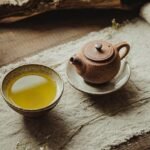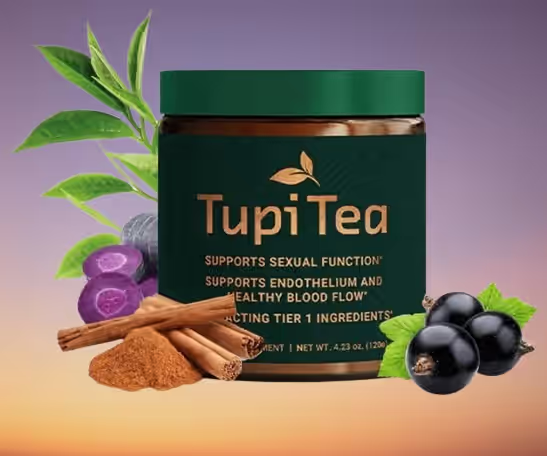Table of Contents
Yellow tea, a rare and special brew, often gets overlooked. It’s like the quieter cousin of green tea, offering a smoother experience without the usual grassy notes. If you’re curious about when to drink yellow tea to really get the most out of it, or just want to understand its unique place in the tea world, you’ve come to the right spot. We’ll cover everything from its history to how best to enjoy its delicate flavor.
Key Takeaways
- Yellow tea offers a mellow alternative to green tea, with a smoother profile due to its unique “yellowing” process.
- It can be enjoyed at various times of the day, from a gentle morning start to an evening wind-down, thanks to its moderate caffeine content.
- This tea is packed with antioxidants and polyphenols, potentially aiding digestion, cognitive function, and skin health.
- Proper brewing involves cooler water (around 175-185°F) and shorter steeping times, with multiple infusions possible.
- Due to its rarity, sourcing from trusted merchants and proper storage in airtight containers away from light and odors are important for maintaining quality.
Understanding Yellow Tea’s Unique Profile
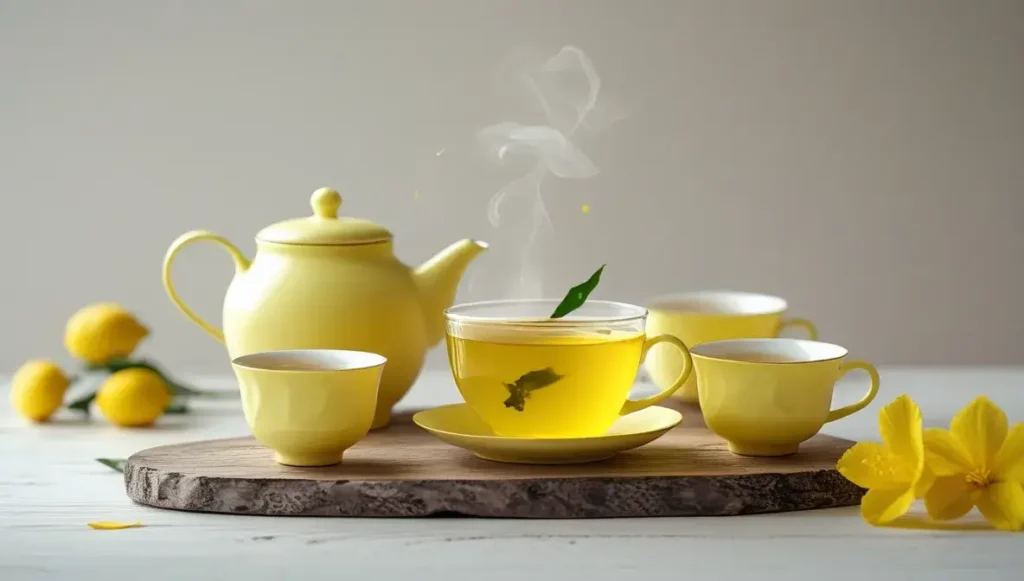
Yellow tea is often called the most mysterious of the tea varieties. While green, black, and oolong teas are pretty common, yellow tea is a bit harder to find, especially outside of China. It’s made from the same plant as other teas, Camellia sinensis, but it goes through a unique production process that sets it apart. Think of it as a mellow cousin to green tea, but with its own special character.
The Mellow Alternative to Green Tea
If you find some green teas a bit too grassy or even slightly bitter, yellow tea might be your new favorite. The special processing it undergoes, particularly a step called ‘stuffing’ or ‘men-huan,’ helps to reduce that grassy flavor. This process involves piling or wrapping the tea leaves, allowing them to undergo a gentle, non-enzymatic transformation. The result is a smoother, sweeter taste that’s often described as nutty or subtly fruity. It’s a really nice way to get some of the benefits of green tea without the sharper notes.
A Glimpse into Yellow Tea’s History
Yellow tea has a long history, dating back to the Tang Dynasty in China, over a thousand years ago. Back then, it was considered a ‘tribute tea,’ meaning it was reserved for the emperor and the royal court. The color yellow held significant meaning in Chinese culture, symbolizing royalty, power, and prosperity. Because of its special processing and its association with the imperial family, yellow tea was quite rare and highly prized. It’s fascinating to think about how this tea was once only for the elite!
The Art of Yellow Tea Production
The creation of yellow tea is a careful, multi-step process that builds upon green tea production. Here’s a simplified look at the key stages:
- Withering: Similar to other teas, the leaves are first allowed to wilt slightly.
- Fixing (Sha Qing): The leaves are heated, often by pan-firing, to stop oxidation and develop initial aromas. This is similar to green tea processing.
- Stuffing (Men-huan): This is the defining step. The leaves are gently piled or wrapped in cloth or baskets and allowed to sit for a period. Under controlled conditions of moisture and heat, the leaves undergo a slow, non-enzymatic oxidation, which changes their color to yellow and mellows their flavor.
- Drying: The leaves are then dried, often at lower temperatures than other teas, to preserve their delicate character.
This meticulous process is what gives yellow tea its distinctive smooth taste and golden hue. It’s a testament to the skill and patience of the tea artisans who produce it.
👉 Experience premium yellow tea for a serene, elevated morning ritual 👈
When to Enjoy Yellow Tea for Optimal Benefits
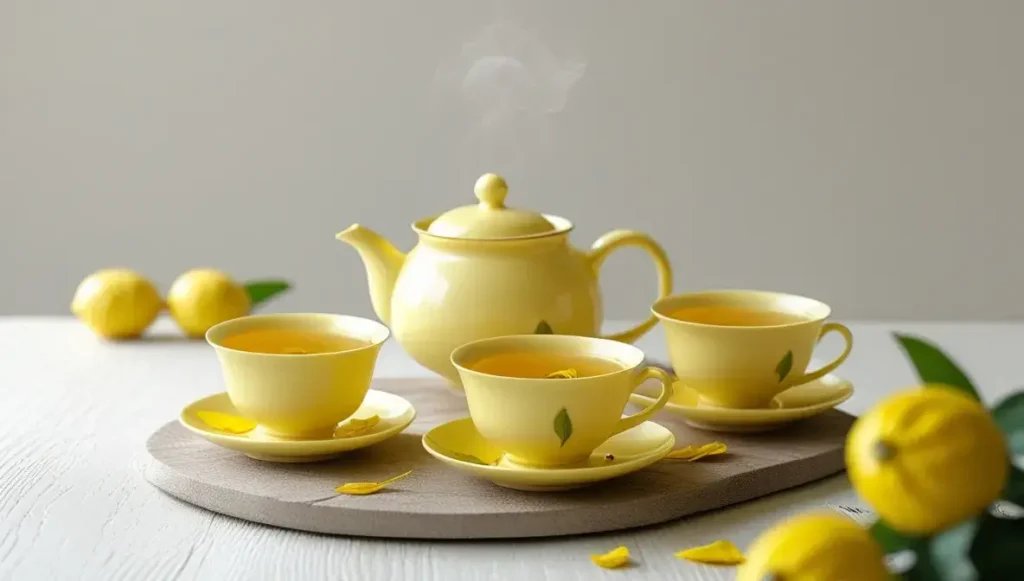
Figuring out the best time for yellow tea can really make a difference in how you feel and what benefits you get. It’s not just about sipping it whenever; there’s a bit of strategy involved if you want to maximize its positive effects. Think of it like this: you wouldn’t drink an espresso right before bed, right? Yellow tea, while generally milder than coffee, still has caffeine, and its unique properties lend themselves to specific times of day.
Morning Ritual for Gentle Alertness
Starting your day with yellow tea can be a really nice way to ease into things. Unlike the sharp jolt you might get from coffee, yellow tea offers a more subtle lift. The caffeine content, which is usually moderate, can help you feel more awake and focused without that jittery feeling. It’s a good choice if you find coffee a bit too intense first thing in the morning. The gentle alertness it provides is perfect for getting your brain working on tasks without feeling overwhelmed. It’s a smooth transition into your day.
Afternoon Refreshment and Focus
When that mid-afternoon slump hits, reaching for yellow tea can be a smart move. It’s a great way to refresh your mind and regain focus without the crash that often comes with sugary drinks or even too much coffee. The combination of mild caffeine and beneficial compounds can help clear your head and improve concentration for the rest of your workday or afternoon activities. It’s a good way to reset your mental energy.
Evening Relaxation Without Disruption
This is where yellow tea really shines as a unique option. Because its caffeine levels are generally lower than black tea and often lower than many green teas (depending on the specific type and processing), it can be enjoyed in the evening without typically interfering with sleep. If you’re looking for a warm, comforting beverage after dinner that still offers some health perks but won’t keep you up all night, yellow tea is a fantastic choice. It provides a sense of calm and relaxation, making it a pleasant way to wind down your day. It’s a way to enjoy a warm drink and its benefits without the worry of caffeine keeping you awake.
Health Advantages of Incorporating Yellow Tea
Antioxidant Powerhouse for Cellular Health
Yellow tea is packed with antioxidants, similar to green tea, but some studies suggest it might even have a bit more. These compounds are like tiny bodyguards, fighting off unstable molecules called free radicals. When these free radicals run wild, they can damage your cells, which is linked to aging and various health issues. So, by drinking yellow tea, you’re giving your cells some extra protection. It’s thought that the unique production process of yellow tea, especially the ‘yellow sealing’ step, might actually boost its antioxidant levels. This means you’re getting a good dose of goodness with every cup.
Supporting Digestive Wellness
While not as widely studied as its antioxidant properties, yellow tea may also lend a hand to your digestive system. Some research points to compounds in tea, including those found in yellow tea, that could help reduce inflammation in the stomach. This might translate to a more comfortable digestive experience for some people. It’s not a magic cure, of course, but incorporating it into your routine could be a gentle way to support your gut health. Think of it as a soothing addition to your day.
Potential for Cognitive and Skin Health
There’s some interesting talk about yellow tea’s potential benefits for your brain and skin. The antioxidants we mentioned earlier? They don’t just protect your body’s cells; they might also help keep your brain cells healthy, potentially warding off age-related cognitive decline. For your skin, these same antioxidants can help protect against damage from the sun and environmental stressors, which can lead to premature aging. So, while you sip your tea, you might be doing your future self a favor, both mentally and aesthetically. It’s a nice thought, isn’t it?
👉 Discover the best yellow tea flavors for mindful sipping moments 👈
Brewing Yellow Tea for Peak Flavor
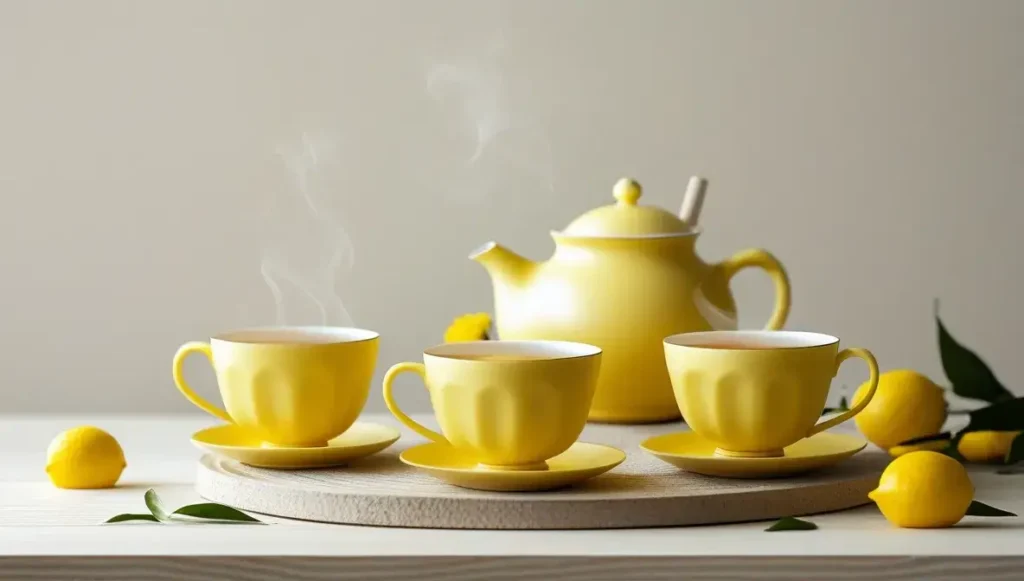
Brewing yellow tea right is key to unlocking its subtle flavors. It’s not as straightforward as just tossing leaves in hot water, you know? The whole point of yellow tea is its mellow character, so you don’t want to blast it with too-hot water and ruin that.
Ideal Water Temperature and Steeping Times
For most yellow teas, aim for water around 175-185°F (80-85°C). Boiling water is usually too harsh. A good starting point for steeping is about 2-3 minutes. But honestly, this can change depending on the specific tea and how you like it. It’s all about experimenting to find what works best for your palate.
The Art of Multiple Infusions
One of the really cool things about good quality yellow tea is that you can steep it multiple times. Each infusion brings out slightly different notes. Start with the initial steep, and then try steeping it again. You might notice the flavor changes, maybe becoming a bit lighter or bringing out new aromas. Just add a little more time to each subsequent steep, maybe 30 seconds to a minute longer each time.
Western vs. Gongfu Brewing Styles
There are two main ways people brew yellow tea. The Western style is pretty simple: use about 3 grams of tea for a 12-ounce mug and steep for 3 minutes at that 180°F temperature. You can get a few infusions out of it this way.
Then there’s the Gongfu style, which is a bit more involved but really lets you appreciate the tea. You’ll need a small pot or a gaiwan. Use more leaf – maybe 5 grams for a small pot – and much shorter steeps, like 30-60 seconds. You can get many more infusions this way, and each one is a little different. It’s a more mindful way to drink tea, if you ask me.
Don’t be afraid to play around with the water temperature and steeping times. Yellow tea is forgiving, and you’ll discover your favorite way to brew it through trial and error. It’s a journey, not a race.
Sourcing and Storing Your Yellow Tea

Finding good yellow tea can feel like a treasure hunt, given how rare it is. When you’re looking for quality, it’s all about knowing where to look and how to keep it fresh. Many producers are moving towards easier teas like green tea, making authentic yellow tea harder to come by. This means you’ll likely find the best options in specialty tea shops or directly from reputable online vendors who focus on these less common varieties. It’s worth the effort, though, as the unique flavor profile is really something special.
Choosing Reputable Merchants
When you’re buying yellow tea, especially if you’re new to it, stick with sellers who know their stuff. Look for shops that provide detailed information about the tea’s origin, the specific processing methods used, and tasting notes. A good merchant will be transparent about where their tea comes from and how it’s handled. They often have a passion for these unique teas and can guide you toward a good choice. Don’t be afraid to ask questions – a knowledgeable seller will be happy to share.
Proper Storage for Longevity
Once you’ve got your hands on some yellow tea, keeping it fresh is key. Think of it like keeping delicate herbs – you want to protect them from things that can make them go bad. Here’s a quick rundown:
- Airtight Container: This is probably the most important rule. Yellow tea needs to be sealed away from the air. A good tin or a sturdy, sealable jar works well. If you plan to drink it relatively soon, a nice ceramic jar can also do the trick.
- No Moisture: Dampness is the enemy of tea. Make sure your storage spot is dry, and the container itself is completely dry before you put the tea in. Mold can ruin a batch pretty quickly.
- Away from Smells: Tea leaves are like little sponges for odors. Keep your yellow tea far from anything with a strong scent, like spices, coffee, or even certain foods in the fridge. You want to preserve that delicate aroma, not mix it with other smells.
- No Direct Light: Sunlight can break down the good stuff inside the tea leaves, making them taste stale. Store your tea in a dark cupboard or pantry.
Some people suggest the fridge, but only if you can seal the tea really well. Otherwise, the moisture and smells inside can do more harm than good. For most yellow teas, a cool, dark, dry place is perfect.
Recognizing Authentic Yellow Tea
Spotting the real deal can be tricky. Authentic yellow tea has a distinct mellow taste and a gentle, often floral or fruity aroma, quite different from the more vegetal notes of green tea. The liquor should be a clear, golden-yellow color. The production process, particularly the ‘menhuang’ (yellowing) stage, is what gives it these unique characteristics.
If a tea is described as yellow but tastes very grassy or has a strong, pungent smell, it might not be a true yellow tea. Also, be wary of teas that are just slightly tinted yellow; the process is more involved than just a color change. For those serious about their yellow tea consumption guide, looking for specific regional names like Jun Shan Yin Zhen or Meng Ding Huang Ya can be a good starting point, as these are well-known examples of genuine yellow tea.
👉 Savor top-quality yellow tea while you unwind and reflect 👈
Experiencing Yellow Tea’s Nuances
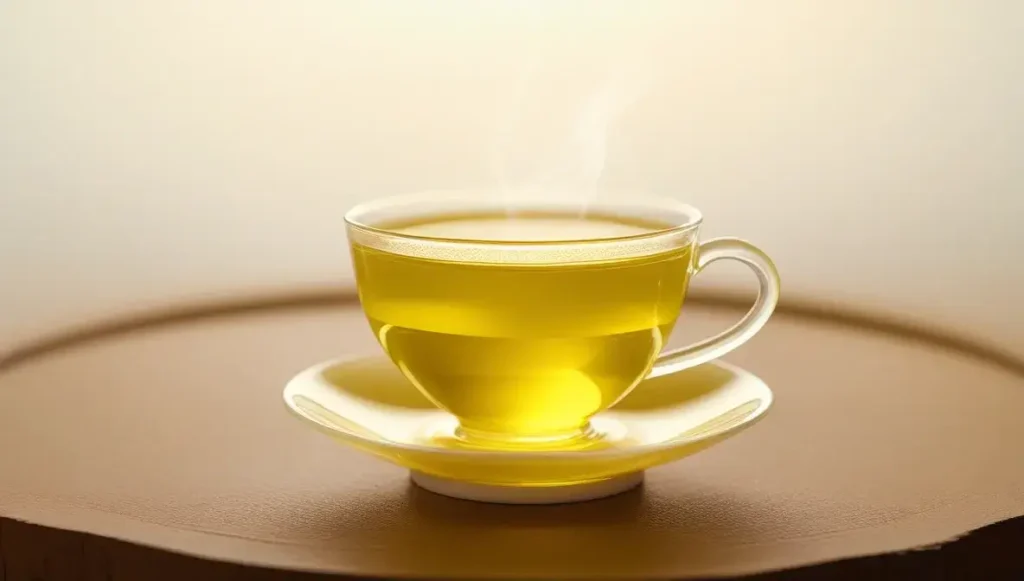
Yellow tea, often described as the shy cousin of green tea, really shines when you take the time to appreciate its subtle complexities. It’s not as grassy as some greens, and it definitely lacks the punch of a dark roast. Instead, yellow tea offers a gentle embrace, a mellow character that’s quite unique. Understanding its flavor profile is key to truly enjoying it.
Flavor Profiles and Aroma Characteristics
Think of yellow tea as having a softer voice. You won’t get that sharp, vegetal note you might find in some green teas. Instead, expect a smooth, often slightly sweet taste. Some varieties might hint at toasted nuts or even a touch of creaminess. The aroma is usually gentle too, maybe a whisper of something floral or a faint, pleasant earthiness. It’s a tea that doesn’t shout; it murmurs.
Caffeine Content and Its Effects
Yellow tea generally has a moderate amount of caffeine, usually less than black tea but comparable to many green teas. This means you can get a gentle lift without the jitters that can sometimes come with higher-caffeine drinks. It’s enough to help you feel alert and focused, but usually not so much that it disrupts your evening if you’re sensitive.
Pairing Yellow Tea with Occasions
Because of its mellow nature, yellow tea is incredibly versatile. It’s a fantastic companion for light snacks, like shortbread cookies or delicate pastries. It also works well on its own when you just need a moment of calm.
Here are a few ideas:
- Morning: A gentle start to the day, offering a mild awakening.
- Afternoon: A pleasant break, helping you refocus without a caffeine crash.
- With Meals: Pairs nicely with lighter fare, like steamed fish or vegetable dishes.
- Quiet Evenings: A soothing drink that won’t keep you up.
Yellow tea’s unique processing, particularly the ‘menhuang’ or yellowing stage, is what gives it that distinctive mellow character. This step involves gently piling and covering the tea leaves, allowing them to oxidize slowly and develop their signature taste and color, reducing any harshness.
Conclusion: When to Drink Yellow Tea for Best Enjoyment
So, we’ve explored what makes yellow tea so special, from its unique production process to its potential health perks. It’s definitely not your everyday brew, and that’s part of its charm. Think of it as a treat, something to savor on a quiet afternoon or when you want to try something a little different. While it might be a bit harder to find than your usual green or black tea, seeking out a good yellow tea is a rewarding experience. Just remember to store it right and brew it gently to get the most out of its subtle flavors. Enjoy discovering this rare gem!
👉 Elevate your afternoon with premium yellow tea and calm clarity 👈
Frequently Asked Questions
What exactly is yellow tea?
Yellow tea is a special kind of tea made from the same plant as green tea, but it goes through an extra step called “yellowing” or “sealing yellow.” This makes it taste smoother and less grassy than green tea. It’s rare and mostly found in China.
When is the best time to drink yellow tea?
Yellow tea is best enjoyed when you want a gentle lift without feeling too wired. It’s great for a calm morning start, a mid-afternoon break to help you focus, or even in the evening because it’s less likely to keep you awake than other teas.
Does yellow tea contain caffeine?
Yes, yellow tea does have caffeine, but usually less than black tea and sometimes less than green tea. The amount can change depending on how it’s made. The caffeine in tea also works with an amino acid called L-theanine, which can help you feel alert but also relaxed.
How should I brew yellow tea?
To make yellow tea taste its best, use water that’s not boiling, around 175-185°F (80-85°C). Let the leaves steep for about 30 seconds to 2 minutes. You can often steep the same leaves multiple times to get different flavors.
Why is yellow tea hard to find and often expensive?
Yellow tea is quite rare and can be a bit pricey, so it’s often saved for special moments. Because it’s not mass-produced, it’s wise to buy it from trusted tea sellers to make sure you’re getting the real thing and not a fake.
What are the health benefits of drinking yellow tea?
Yellow tea is packed with antioxidants, which are good for your body. It might help with digestion, protect your skin from aging, and potentially even boost brain health. It’s like a healthy treat for your body.



![Jasmine Tea vs Green Tea Benefits: Which Gives Better Health Results? [2025] jasmine tea vs green tea benefits](https://www.goteaworld.com/wp-content/uploads/2025/09/jasmine-tea-vs-green-tea-benefits-150x150.webp)





![Pu Erh Tea vs Green Tea: Which is Better for Daily Health? [2025] pu erh tea vs green tea](https://www.goteaworld.com/wp-content/uploads/2025/10/pu-erh-tea-vs-green-tea-150x150.webp)
